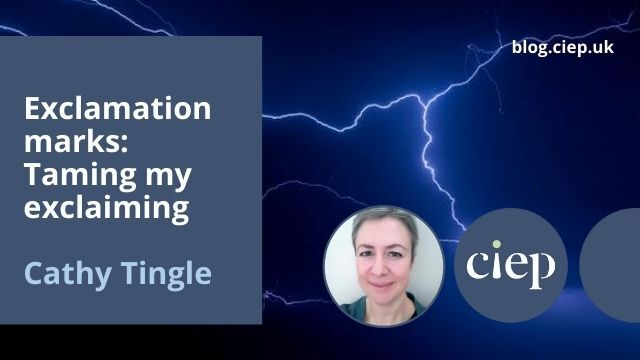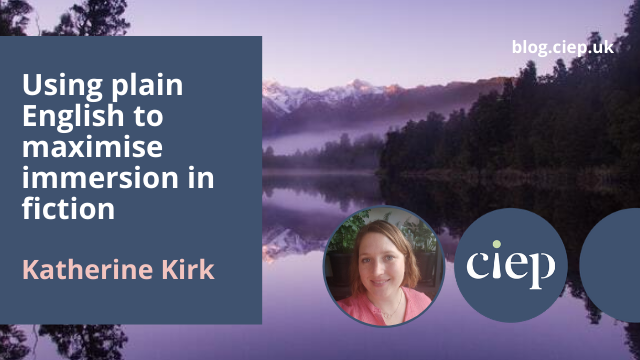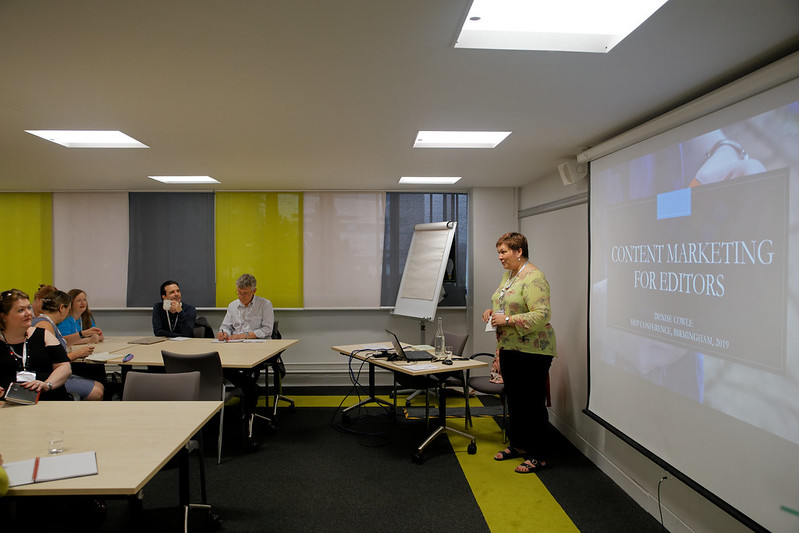Do you overuse exclamation marks? Cathy Tingle does! In this article from the archives, she searches her past to discover where she acquired this habit, and consults some language books to learn how the exclamation mark should be used.
 Sometimes in life you come to a sudden realisation about your influences – why you do things the way you do. At holiday time, with more opportunity to see your extended family, you might suddenly realise that a characteristic you’d fondly thought of as all your own is in fact your Great Aunt Lottie’s most irritating habit.
Sometimes in life you come to a sudden realisation about your influences – why you do things the way you do. At holiday time, with more opportunity to see your extended family, you might suddenly realise that a characteristic you’d fondly thought of as all your own is in fact your Great Aunt Lottie’s most irritating habit.
And if you’re a wordy type, occasionally you have a blinding flash about what you might call your ‘language heritage’.
From Madame Bovary to …
Although I used to think of my writing style as something sophisticated that emerged from my years as a student of the world’s literature, I recently discovered that there had been a stronger, and more primal, influence. I had flattered myself that my love of sentence fragments was edgy. I had thought that my use of ‘And’ at the beginning of paragraphs was subversive. I had believed that my attraction to parenthetical phrases was clever and, on occasion, witty. And, of course, that every last one of these writing tics was down to my very own style.
But no. It seems that I got them from somewhere else: the Mr Men books, to be precise. Revisiting the oeuvre for the first time since my childhood at my own children’s bedtime, I suddenly realised that all these years what I had been channelling was not Madame Bovary but, in fact, Mr Greedy.
One of the biggest things for which I can thank my unexpected muse, Roger Hargreaves, is a love of exclamation marks. Let’s take a look at these examples, from Mr Grumpy:
Mr Grumpy was at home.
Crosspatch Cottage!
and Mr Silly:
In Nonsenseland the dogs wear hats!
And, do you know how birds fly in Nonsenseland?
No, they don’t fly forwards.
They fly backwards!
Those exclamation marks, I would say, are necessary in the context of a Mr Men book. RL Trask, in the Penguin Guide to Punctuation (1997), advises that you can use an exclamation mark (which also, he notes interestingly, can be called a ‘bang’ or a ‘shriek’) ‘to show that a statement is very surprising’. That’s what’s happening in the Mr Silly example. In Mr Grumpy, Hargreaves is packing in much more energy and emotion (of the ‘Look! How apt!’ variety) than if he had simply written ‘It was called Crosspatch Cottage.’
Laughing at your own joke
I must say that over the years I have found what we might call the ‘Crosspatch Cottage!’ sentence fragment/exclamation mark combo a particularly seductive one. My mistake may have been to put it into copy intended for grown-ups. Not anything too formal, granted, but the sort of chirpy, chatty writing you might find in emails, blogs or social media posts. Copy that’s supposed to raise a smile.
David Marsh observes, ‘When a newspaper employs an exclamation mark in a headline, it invariably means: “Look, we’ve written something funny!”’ (For Who the Bell Tolls, Faber, 2013). David Crystal, in Making a Point (Profile, 2016), adds a quote attributed to F Scott Fitzgerald: including exclamation marks is ‘like laughing at your own joke’. Hm. I do that in real life, too.
 Exclamation marks only for exclamations!
Exclamation marks only for exclamations!
So, when should exclamation marks be used? Benjamin Dreyer (in Dreyer’s English, Random House, 2019), after counselling against their frequent use as ‘bossy, hectoring, and, ultimately, wearing’ (oh dear!), does also say:
It would be irresponsible not to properly convey with an exclamation mark the excitement of such as ‘Your hair is on fire!’ The person with the burning head might otherwise not believe you. And the likes of ‘What a lovely day!’ with a full stop rather than a bang, as some people like to call the exclamation point, might seem sarcastic. Or depressed.
So their use doesn’t need to be banned completely in writing for adults. Trask adds to Dreyer’s instinct about the ‘What a lovely day!’ statement by formalising it in a rule: ‘Use an exclamation mark after an exclamation, particularly after one beginning with what or how.’
And although I disagree with the first part of what David Marsh says here (for where would the Mr Men books be without their exclamation marks?), he does sum things up nicely:
Exclamation marks are seldom, if ever, obligatory. They can, however, be annoying! And make it look as if your work was written by a 12-year-old!!! So use sparingly.
The cure
But nothing cures a writing tic like recognising your writing style in another writer who irritates you. And in the last few years we’ve had a lot of exclamation marks chucked at us in tweets and newspaper articles, haven’t we? A lot of ‘bossy, hectoring, and, ultimately, wearing’ claims, counter-claims, denials, deflections.
As when witnessing Great Aunt Lottie’s annoying habit, you find yourself saying ‘Am I really like that?’ So there’s my cure, it turns out: the realisation that there’s already quite enough banging and shrieking going on in the world without my adding to the din.
This article was published in the September/October 2019 issue of Editing Matters.
About Cathy Tingle
 Cathy Tingle is an Advanced Professional Member of the CIEP.
Cathy Tingle is an Advanced Professional Member of the CIEP.
Her business, DocEditor, specialises in non-fiction, especially academic, copyediting.
 About the CIEP
About the CIEP
The Chartered Institute of Editing and Proofreading (CIEP) is a non-profit body promoting excellence in English language editing. We set and demonstrate editorial standards, and we are a community, training hub and support network for editorial professionals – the people who work to make text accurate, clear and fit for purpose.
Find out more about:
Photo credits: lightning by Leon Contreras; laugh by Tim Mossholder, both on Unsplash.
Posted by Abi Saffrey, CIEP blog coordinator.
The views expressed here do not necessarily reflect those of the CIEP.
























